Alex Chojnacki
University of Michigan
ActiveRemediation: The Search for Lead Pipes in Flint, Michigan
Aug 17, 2018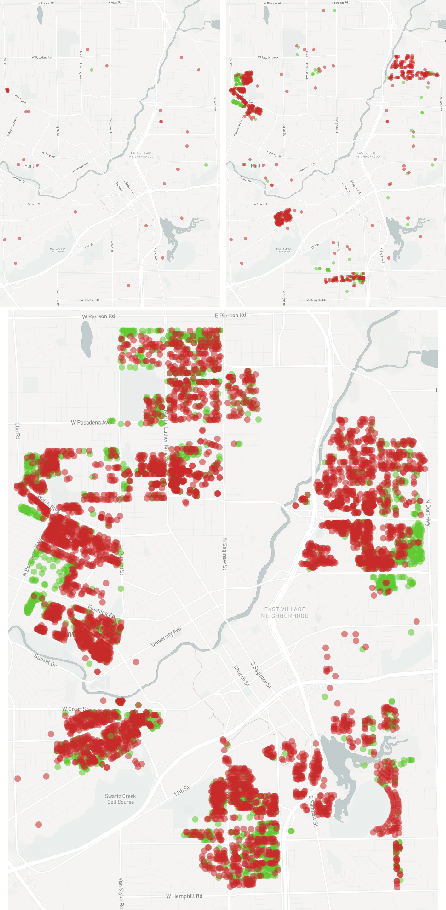
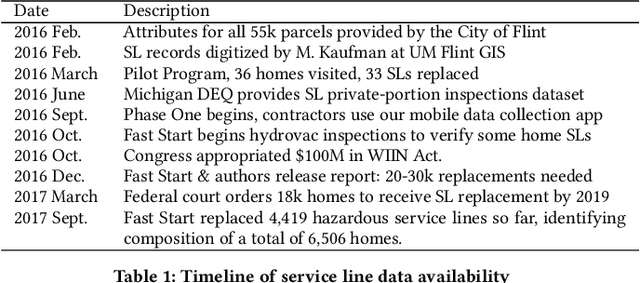
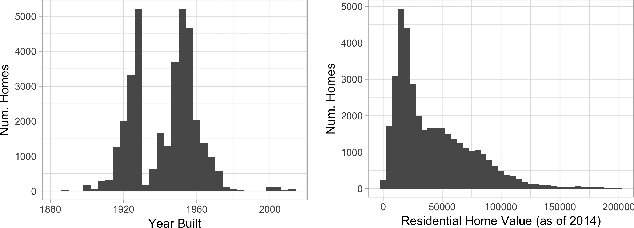
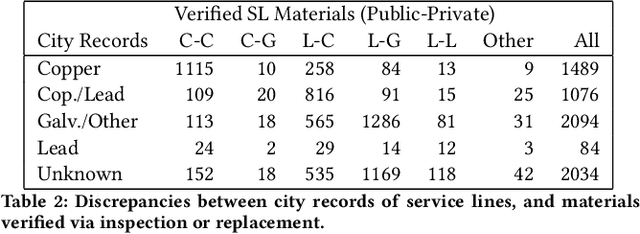
Abstract:We detail our ongoing work in Flint, Michigan to detect pipes made of lead and other hazardous metals. After elevated levels of lead were detected in residents' drinking water, followed by an increase in blood lead levels in area children, the state and federal governments directed over $125 million to replace water service lines, the pipes connecting each home to the water system. In the absence of accurate records, and with the high cost of determining buried pipe materials, we put forth a number of predictive and procedural tools to aid in the search and removal of lead infrastructure. Alongside these statistical and machine learning approaches, we describe our interactions with government officials in recommending homes for both inspection and replacement, with a focus on the statistical model that adapts to incoming information. Finally, in light of discussions about increased spending on infrastructure development by the federal government, we explore how our approach generalizes beyond Flint to other municipalities nationwide.
A Data Science Approach to Understanding Residential Water Contamination in Flint
Jul 05, 2017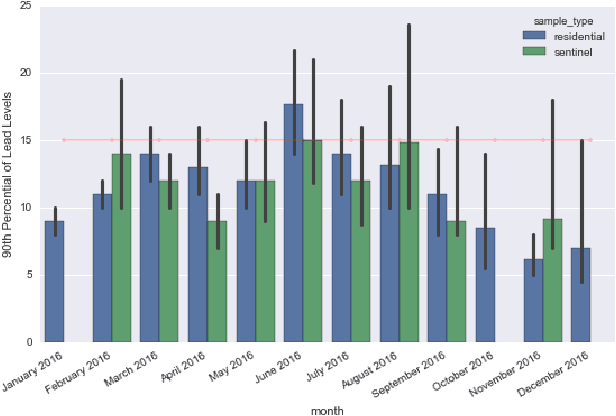
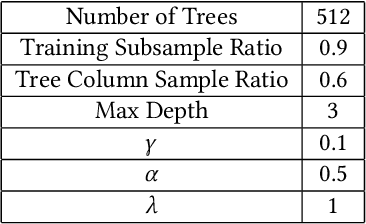
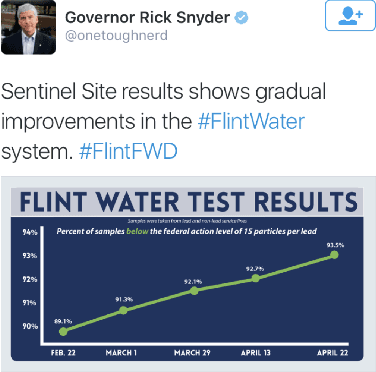

Abstract:When the residents of Flint learned that lead had contaminated their water system, the local government made water-testing kits available to them free of charge. The city government published the results of these tests, creating a valuable dataset that is key to understanding the causes and extent of the lead contamination event in Flint. This is the nation's largest dataset on lead in a municipal water system. In this paper, we predict the lead contamination for each household's water supply, and we study several related aspects of Flint's water troubles, many of which generalize well beyond this one city. For example, we show that elevated lead risks can be (weakly) predicted from observable home attributes. Then we explore the factors associated with elevated lead. These risk assessments were developed in part via a crowd sourced prediction challenge at the University of Michigan. To inform Flint residents of these assessments, they have been incorporated into a web and mobile application funded by \texttt{Google.org}. We also explore questions of self-selection in the residential testing program, examining which factors are linked to when and how frequently residents voluntarily sample their water.
Data Science in Service of Performing Arts: Applying Machine Learning to Predicting Audience Preferences
Sep 30, 2016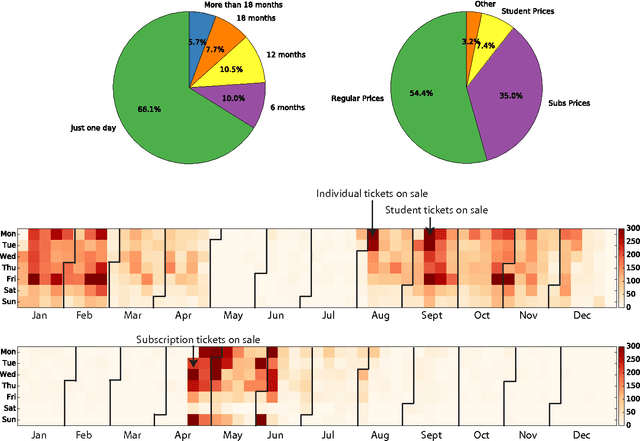
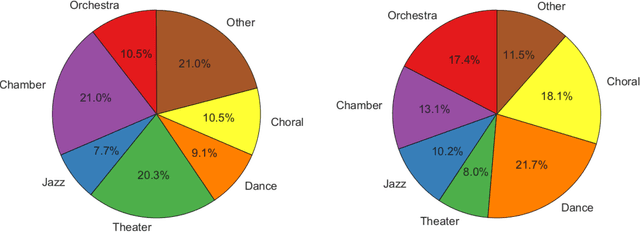

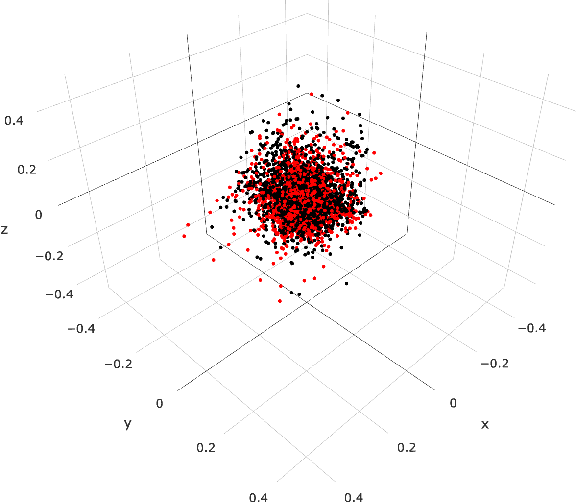
Abstract:Performing arts organizations aim to enrich their communities through the arts. To do this, they strive to match their performance offerings to the taste of those communities. Success relies on understanding audience preference and predicting their behavior. Similar to most e-commerce or digital entertainment firms, arts presenters need to recommend the right performance to the right customer at the right time. As part of the Michigan Data Science Team (MDST), we partnered with the University Musical Society (UMS), a non-profit performing arts presenter housed in the University of Michigan, Ann Arbor. We are providing UMS with analysis and business intelligence, utilizing historical individual-level sales data. We built a recommendation system based on collaborative filtering, gaining insights into the artistic preferences of customers, along with the similarities between performances. To better understand audience behavior, we used statistical methods from customer-base analysis. We characterized customer heterogeneity via segmentation, and we modeled customer cohorts to understand and predict ticket purchasing patterns. Finally, we combined statistical modeling with natural language processing (NLP) to explore the impact of wording in program descriptions. These ongoing efforts provide a platform to launch targeted marketing campaigns, helping UMS carry out its mission by allocating its resources more efficiently. Celebrating its 138th season, UMS is a 2014 recipient of the National Medal of Arts, and it continues to enrich communities by connecting world-renowned artists with diverse audiences, especially students in their formative years. We aim to contribute to that mission through data science and customer analytics.
 Add to Chrome
Add to Chrome Add to Firefox
Add to Firefox Add to Edge
Add to Edge